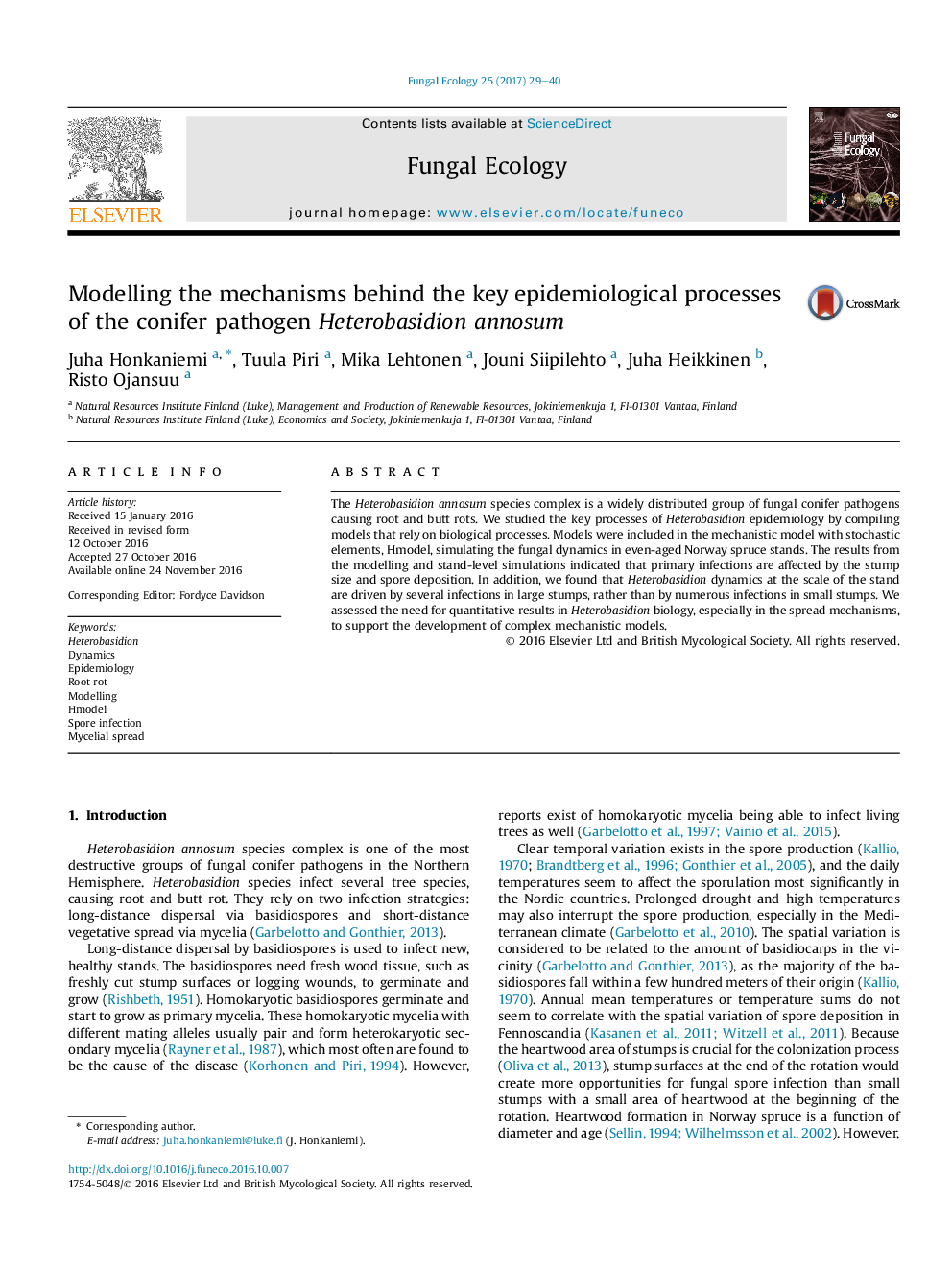| کد مقاله | کد نشریه | سال انتشار | مقاله انگلیسی | نسخه تمام متن |
|---|---|---|---|---|
| 5517705 | 1543640 | 2017 | 12 صفحه PDF | دانلود رایگان |

- Mechanistic approach was employed to model key processes of Heterobasidion annosum epidemiology.
- Primary infection establishment was affected by stump size, as well as spore density.
- Infections in young stands have small effect on the dynamics of H. annosum.
- Large-diameter stumps drive Heterobasidion epidemiology in the Hmodel.
The Heterobasidion annosum species complex is a widely distributed group of fungal conifer pathogens causing root and butt rots. We studied the key processes of Heterobasidion epidemiology by compiling models that rely on biological processes. Models were included in the mechanistic model with stochastic elements, Hmodel, simulating the fungal dynamics in even-aged Norway spruce stands. The results from the modelling and stand-level simulations indicated that primary infections are affected by the stump size and spore deposition. In addition, we found that Heterobasidion dynamics at the scale of the stand are driven by several infections in large stumps, rather than by numerous infections in small stumps. We assessed the need for quantitative results in Heterobasidion biology, especially in the spread mechanisms, to support the development of complex mechanistic models.
Journal: Fungal Ecology - Volume 25, February 2017, Pages 29-40